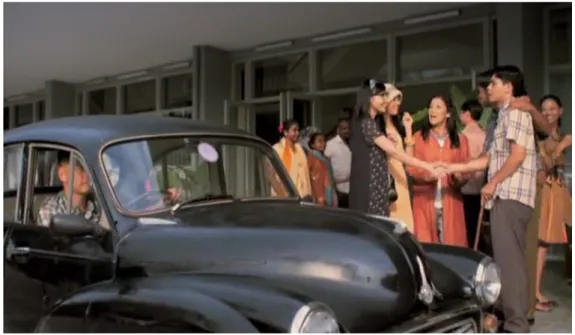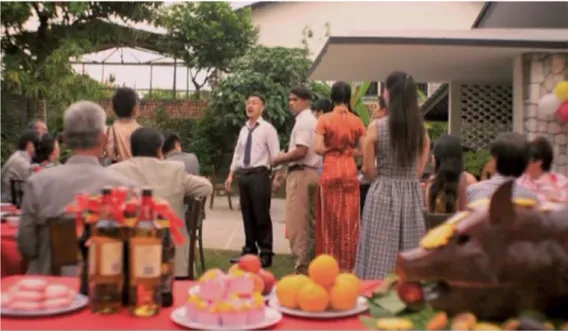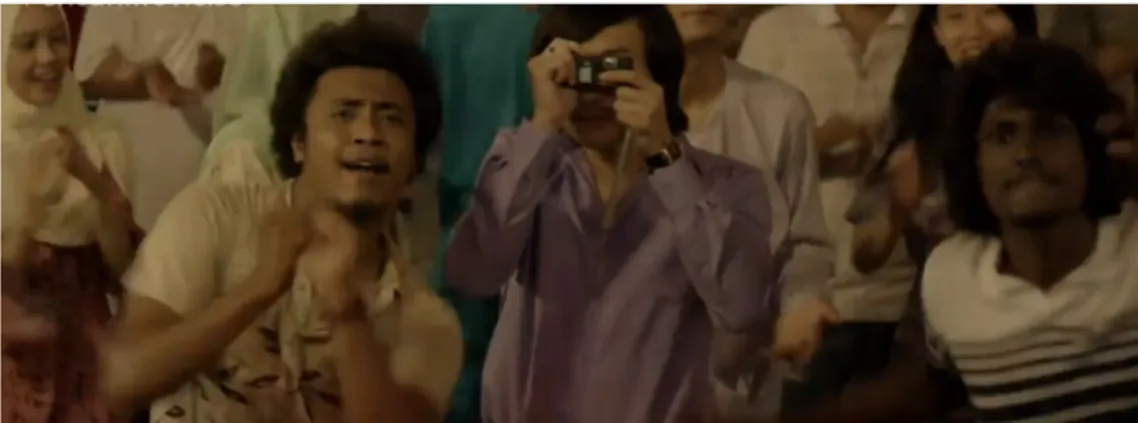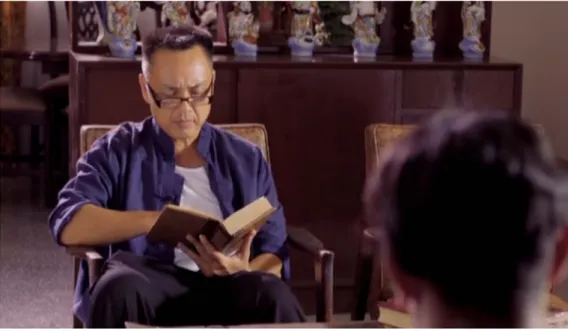This thesis entitled "A CASE STUDY ON THE REPRESENTATION OF CHINESE CHARACTERS IN 29 FEBRUARI AND OLA BOLA" was prepared by BEH KAY HIENG and submitted in partial fulfillment of the requirements for the degree of Master of Communication at Universiti Tunku Abdul Rahman. It is hereby confirmed that Beh Kay Hieng (ID No: 1403954) has completed this thesis entitled "A CASE STUDY ON THE REPRESENTATION OF CHINESE CHARACTERS IN 29 FEBRUARI AND OLA BOLA" under the supervision of Dr.
Introduction
2015's "Furious 7"; part of the Fast and Furious franchise, which managed to collect over RM60 million in ticket sales (Box Office Mojo, 2018). In comparison, the highest-grossing Malaysian film so far was 2018's "Hantu Kak Limah 3", which managed to collect over RM20.5 million. in box office collection in just 11 days after the premiere ("Hantu Kak Limah' makes history", 2018).
Problem Statement
Homogeneity of Malay films
Ramlees from the 1950s to the 1970s were aimed at a predominantly Malay audience with Malay-centric casts (Driskell, 2016), with the exception of the 1968 film 'Gerimis', which had an Indian female lead. Fast forward to the present, many Malaysian films still follow a homogenous view of local film production featuring an all-Malay cast.
Portrayal of Chinese characters in Malaysian films
Although the film was not a box office success, it was claimed to be the "most ethnically diverse film" at the time (Van der Heide, 2002 as cited in Ciecko, 2006). Yasmin Ahmad's 2005 romantic comedy "Sepet", which pairs a Malaysian female lead with a Chinese male lead, prompted critics such as Loo (2007) to comment that the film "narrates a vision of Malaysia that is missing from the mainstream media and the public discourse in Malaysia.”, as the film made audiences question their views on nationality, ethnicity and ethical matters. The lack of visibility of Chinese characters in Malaysian films highlights two prominent approaches of previous filmmakers, which: 1) Chinese characters are token characters that do not affect the plot of the film, and 2) are based on preconceived notions with little effort to further develop the character.
Research Background
Although the Chinese community is still a non-Malay minority in the social makeup of Malaysia, their contribution to the nation's growth is considered equal and equal to that of other races. Therefore, it is crucial to examine the film's depiction of literate Chinese in order to understand where the community stands in society.
Research Questions
Vassiliou (2006) argued that the causal relationship in a film can be based on the actions of characters in the film that cause events to change. Bordwell and Thomson (2016) describe the plot as "everything visibly and audibly presented in the film before us" (p. 76).
Research Limitations
Secondly, this research is only limited to the main characters of Chinese in the selected films, and supporting characters who have explicit roles in the two films. The portrayal of Chinese characters in modern Malaysian films has enabled us to understand the role played by the Chinese community in Malaysian society based on their portrayal in films.
Chapterisation
The findings of the study are discussed in Chapter 4 in terms of the representation of Chinese characters in the selected films. Chapter 5 discusses the results of the study, while providing suggestions to help future researchers expand the topic, followed by References.
Introduction
History of Malaysian Films
Part of the appeal of this film was that it was told through cross-cultural dialogues and negotiations that focused on the character's ethical identities; from the opening credits to the end of the film (Wong, Pillai & Ong, 2018). Fast forward to the 1980s, Malay-language films attempted to push boundaries, such as director Rahim Razali's 1985 film Tsu Feh-Sofia, which challenged the Malay film norm by telling the story of a Chinese doctor who converted to Islam.
Racial Representation in Films
- Representation of minorities in films
- Portrayal of Chinese characters in films
- Portrayal of Chinese characters in Malaysian films
- Representation by Stuart Hall
- Implications of Representation by Stuart Hall to the research
Wong, Pillai, and Ong (2018) found that movies in the 1960s portrayed Chinese literate women with racial stereotypes. Khoo (as cited in Zakir, 2008) said that many representations of Chinese characters in Malaysian films challenge the negative ethnic stereotypes prevalent in mainstream Malay-language cinema as many of the filmmakers are Malaysian Chinese.
Related Studies
Representation of race, gender and class in popular culture and its impact on the society
Stuart Hall's Presentation was used to study the two selected films in the research, which helped the researcher to analyze the research data more objectively and accurately, and then mise-en-scène was used to help interpret the meaning from the figures in the films. to reveal the portrayal of Chinese literati in the two selected Malaysian films. Section 3.2.2 discusses the use of mise-en-scène as a research method to help illustrate Stuart Hall's approach to representation and media studies, where meanings can be found in what is and is not represented in the media. Other studies that examined how minority group characters were portrayed included Painter and Ferrucci's (2012) study, which used a textual analysis of female characters in the television series Sports Night to serve as a basis for exploring character portrayals in the media.
Articulating images of South Asians in a global community
The study of Ramspott et al. 2014) on fictional construction about male stereotypes found in the Catalan television series "Porca Miseria" in 2004, used textual analysis to analyze the scenes and dialogues of characters. These were considered "essential elements that structure the representation of the models of masculinity and the resulting types of love relationships in the plot of the series". While the study's focus was on gender, it demonstrates how text analysis can be used to extract elements in films that can help determine how, in the case of this study, a character's race plays a role in the film's plot development.
Previous research on Ola Bola
Similar to Maros, Noorizan, and Zakaria's (2016) findings, themes of interracial friendship, multilingual dialogues, and cross-cultural interactions were present in the film. They concluded that code-switching in the film portrays the spirit of solidarity, patriotism and unity in a multiracial society; from Malaysian perspective. Although all three studies found elements of the portrayal of a multiracial society in "Ola Bola" that led to the marketability of the film, they did not examine how Chinese characters were portrayed in the film nor did they explore any tensions resulting from cross-cultural interactions in the film.
Introduction
Research Method
Constructivist discourse analysis
Each segment creates meanings, the act of self-formation and the revelation of the identity of the character portrayed on screen. On the flip side, the constructivist approach emphasizes the importance of audiences constructing their own representations of reality and not being passive recipients of information (Jeong, 2013). This suggests the validity of the viewpoint of the filmmaker and the audience (in the context of this research, the researcher himself) due to their own understanding of the subject, supported by the mise-en-scene technique in section 3.2.2.
Research Instruments
In addition, one of the research tools of this study is the coding sheet used to decode the text of the two chosen films. The selection criteria for the chosen films were not based on the popularity of the films, nor whether they were comparable in genre. Ola Bola and February 29 share a similar plot device, involving a certain amount of time travel, flashbacks, and foreshadowing where past actions affect future outcomes.
Data Collection Procedure
The researcher tried to make sense of the shots, composition, mise-en-scène and placement of each main cast in the film. After finding and classifying all the data (text) in the films, the researcher finalized them as research data for further analysis based on the research questions. In order to increase the credibility of the research, the researcher used approaches such as low-inference descriptors and reflexivity.
Data Analysis
The researcher identified who the Chinese characters were and their interaction with other races in the films. For greater validity, based on the study by Painter and Ferruci (2017), the researcher examined themes after analyzing 25 percent, 50 percent, and 100 percent of the samples. Meanwhile, reflexivity refers to the researcher's use of self-awareness, self-reflection, and understanding of potential biases when analyzing data.
Conclusion
Introduction
Research Findings from the Analysis of the Two Chosen Films
The portrayal of Chinese characters in the two chosen films
He is portrayed as the outsider of the team, both because of his character's background in being brought into the Malaysian football team from East Malaysia, namely Sabah, and also his supposed wealth, as his father is indicated in the film as a timber tycoon . . Ahmad Ali shows his displeasure towards Eric Yong throughout the film, because Eric Yong not only adopted the number 10 jersey of the Malaysian football team that once belonged to the famous Samsul Super 10. Eric Yong was a character based on James Wong, who was one of the strikers for the 1970-1980 Malaysian football team, while Ahmad Ali based on Hassan Sani was also a fellow striker in the same team.
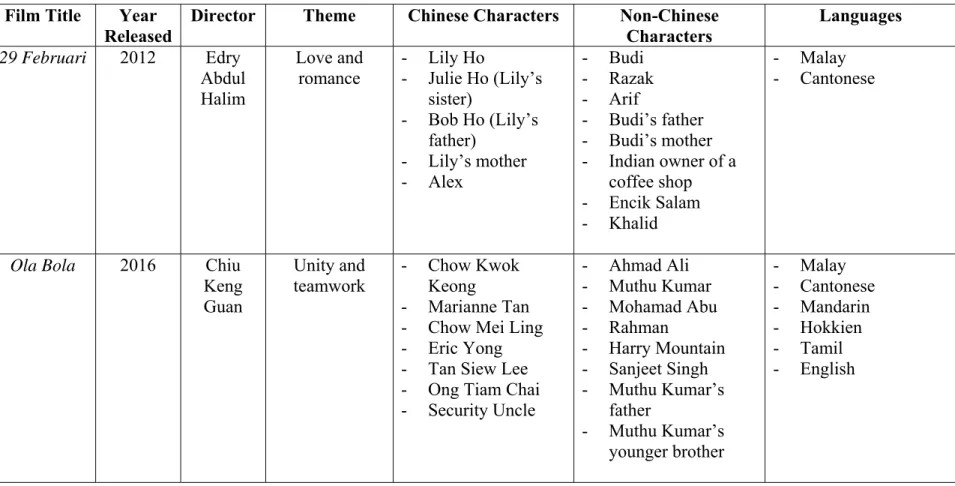
Themes from chosen sample films
- Wealth disparity of Chinese characters
- Focus on a patriarchal society
- The ability to speak other languages
- Comedy relief
In the film, Eric is seen in possession of electronics such as a camera (at 10:46 and as shown in Figure 4.4) and also a television. One of the main interactions between Budi and Lily was between 11:15 p.m., as shown in Figure 4.14. As shown in Figure 4.19, Ong Tiam Cai is seen biting the heel of his football boot.
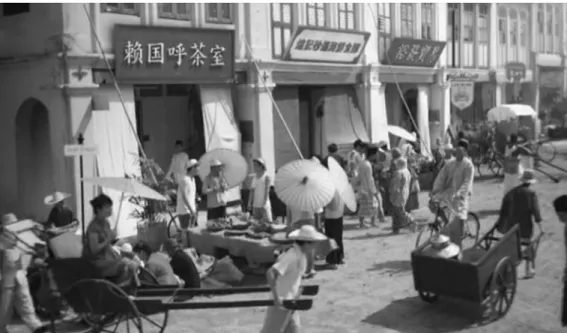
Introduction
Overall Conclusions from the Research Findings
Conflict between Malay and Chinese characters as a plot device
In addition, both chosen films use racial differences to create conflict between the characters, such as February 29's Budi and Mr Ho, and Ola Bola's Eric Yong and Ahmad Ali. The characters in both chosen films are fictional, but the characters in Ola Bola are based on real Malaysian football players, as discussed in Section 4.2.1. This can further complicate audiences' interpretation of the film and real life events, as they may not be able to differentiate between fact and fiction.
Research Contributions
The portrayal of Chinese characters in Malay films as gang leaders and members of the triad does little to strengthen inter-racial relations in society. Alternatively, Chinese filmmakers need to be aware of portrayals of Malaysian characters in Chinese films as second-class citizens, namely in the roles of petty traders, cleaners and drivers. This research contributes to the knowledge of multiculturalism and the portrayal of Chinese characters in film; two areas, however celebrated on screen, would need further research and knowledge into the subject area.
Suggestions for Future Research
Analysis of the pedagogical perspectives represented in the film Dangerous Minds: based on the constructivist framework. The premise of the film follows Budi, a child born on February 29 during the late 19th century. Ola Bola, directed by Chiu Keng Guan, is a film inspired by the story of the glory of the Malaysian national football team that successfully secured a place in the 1980 Summer Olympics.
